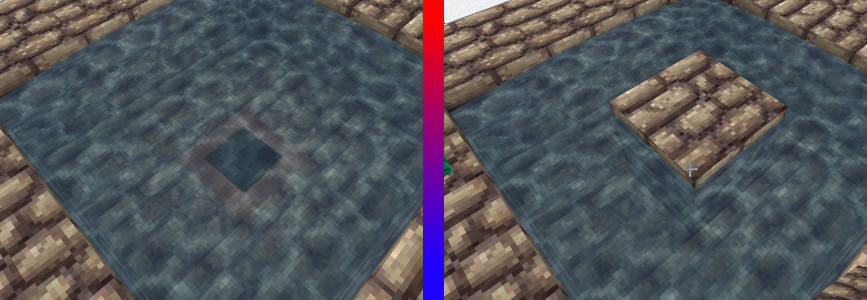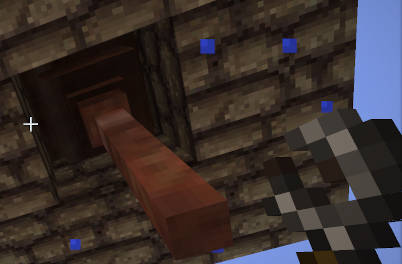| Version 3 (modified by , 5 years ago) ( diff ) |
|---|
This tutorial requires completing the cooking cauldron tutorial.
Auto-hydrating Cooking Cauldron
If you've used the cooking cauldron for awhile now then you're aware of how annoying it is to keep the pot filled with water as it cooks. In this tutorial we show you how to connect the cauldron up with a water source to keep it perpetually filled with water, no more hauling water buckets! This is also a good primer to teach you how to transport water across long distances using pipes, which will be necessary for completing the steam engine assembly.
For this tutorial it will be necessary to ensure one side of your cooking cauldron is accessible so that we can connect a pipe to it. Naturally this should not be the front of the cauldron where you do your cooking, otherwise the piping would get in your way.
Getting Started Requirements
The first thing you need to do is either find or create a water source that is above your cooking cauldron. This is where we are going to pipe water from to your cauldron. The source must be above the cauldron because we can only rely on gravity to move the water through the piping (there are no water pumps).
Crafting Ingredients
Craft the following items, this assumes you have chosen or created a water source near your cooking cauldron to connect-up with piping. We will be using copper pipes to achieve this, the recipes for copper pipes are just like the recipes for bauxite pipes but use copper ingots instead of bauxite clay. Refer to CraftGuide to discover the recipes for these ingredients.
- Corner copper pipes (as many as you think you will need)
- Linear copper pipes (as many as you think you will need)
- One copper intake funnel
Finishing it Up
Now we're going to connect everything up, since we're working with water here we need to take extra care to prevent water from flowing everywhere while we're pipe-laying.
- Cut out a hole at the bottom of your water source, you can take extra care in advance to contain the water that will inevitably spill out from the bottom of your water source
- Place the copper intake funnel in the hole you just created
- Cover-up the top of intake funnel with a block like a bathtub plug (we will take it out later, this is just to prevent water from spilling out everywhere while we're working)
- From the underside of the intake funnel, and using your handy pipe wrench, connect copper piping to a side of your cooking cauldron
- Remove the temporary plug we placed in step 3
Conclusion
Water mechanics using copper piping is a little strange, but it is based on the real-life water physics. You'll come to understand this more in-depth when we work on the boiler. Now your cooking cauldron will be perpetually filled with water as long as your water source still exists. If your water source disappears then your cooking cauldron will gradually evaporate while cooking as if you were relying on water buckets again, here are some ways your water source can disappear:
- You created a water source high up in the mountains where it is cold and the water source freezes to ice
- Your water source is exposed to daylight and the winter season is starting and your water source freezes to ice
- Some random player or mob placed a block on-top of your intake funnel
- Your piping breaks, possibly due to an explosion, player tampering, or too much water pressure
Water pressure isn't really a concern with the cooking cauldron, it's very difficult to get the water pressure dangerously high. But, if you decide to experiment (and this is strongly encouraged) and create elaborate piping networks (i.e. using the T-section or 3-way pipes) then eventually you might start seeing pipes breaking and water pouring out. This happens when the water pressure exceeds the capacity of the copper pipes. One way to get around this is to upgrade to iron pipes, but we'll save that for another tutorial.
Attachments (4)
-
cooking-cauldron-piping.jpeg
(25.9 KB
) - added by 5 years ago.
Piping connecting a cooking cauldron to a water source
-
cover-leak-hole.jpeg
(52.4 KB
) - added by 5 years ago.
Covering the intake with a temporary plug
-
leaking-water-source.jpeg
(33.5 KB
) - added by 5 years ago.
Water leaking out of the bottom of a water source
-
intake-place-pipe.jpeg
(25.6 KB
) - added by 5 years ago.
Placing piping beneath the copper intake funnel
Download all attachments as: .zip




